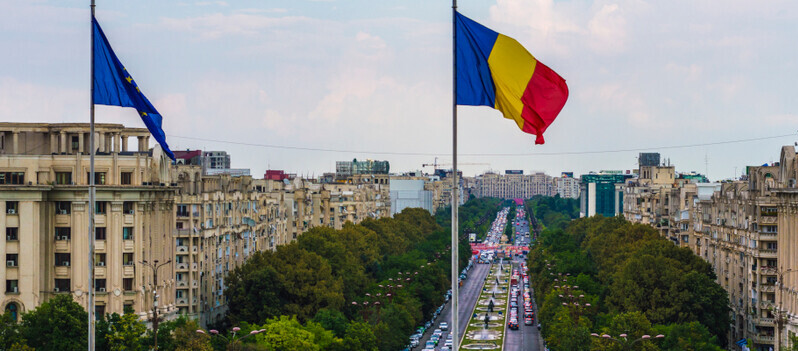2022: trade with Eastern Europe at record levels
In February 2023, the German Eastern Business Association reported a record high for 2022 overall. German foreign trade with the 29 countries of the German Eastern Business Association region rose to a new high of 562 billion euros (442 billion GBP) in 2022, meaning that these countries contributed 18% to total German foreign trade.
What’s remarkable is that, despite the politically tense situation, the value of the trade with Eastern Europe has again turned out to be higher than that of Germany’s trade with China and the USA combined.
In 2022, Russia was the clear loser. At 15 billion euros (13 billion GBP), exports to the aggressor in the Ukraine conflict fell by more than 12 billion euros (10.2 billion GBP), -45% below the value of the pre-war year 2021. "Statistically, the war has already set back German-Russian economic relations by 20 years and there is no end in sight to this negative development," said Michael Harms, Managing Director of the German Eastern Business Association, when presenting the figures.
Eastern Europe as a procurement market
In the meantime, the general mood has turned somewhat gloomier. According to German Eastern Business Association data for January to June 2023, total trade with Eastern Europe fell by 2.3%. The decline in imports from the region is particularly striking (-6.8%). Exports grew by 2.5%.
In absolute figures, the following picture emerges for the first half of 2023: the entire goods traffic in Germany with the German Eastern Business Association region amounted to around 275 billion euros (235 billion GBP). Between January to June 2022 this figure was 281 billion euros (240 billion GBP). Exports amounted to around 140 billion euros, or 120 billion GBP (compared to 136 billion euros/116 billion GBP in 2022) and that of imports accounted for 135 billion euros/115 billion GBP (145 billion euros/124 billion GBP in 2022)
It’s possible that these figures could soon improve. The Vienna Institute for International Economic Studies (wiiw) sees some potential in the economies of Eastern Europe. Slowly, these economies are overcoming the shock of the war. “Growth has bottomed out,” says the Institute’s director, Mario Holzner. For the EU member states in the Eastern European region, he estimates economic growth of 1.2% in 2023.
Given the predicted GDP of the individual countries, we can expect to see the following increases in comparison to 2022:
- Kosovo: 3.6%
- Albania 3.3%
- Moldova: 3.0%
- Montenegro: 2.9%
- Türkiye: 2.6%
- Croatia: 2.5%
- Bulgaria: 1.7%
- Bosnia-Herzegovina: 1.7%
- Ukraine: 1.6%
- North Macedonia: 1.6%
- Russia: 1.5%
- Serbia: 1.5%
- Slovenia: 1.4%
- Slovakia: 0.6%
- Czech Republic: 0.2%
- Hungary: -0.5%
Poland remains the most important trading partner
Poland continues to be Germany's largest trading partner in Eastern Europe. In 2022, according to the German Eastern Business Association, the volume of foreign trade with Poland grew by 13.5% to almost 168 billion euros (143 billion GBP). This puts Poland in 5th place as a trading partner after China, the USA, the Netherlands and France. The Czech Republic climbed from 11th to 10th place, the Russian Federation fell from 13th to 16th place, while Romania came in at 21st place (19th in 2021) and Slovakia at 22nd (20th in 2021).
“Trade with Ukraine fell less sharply than might have been expected given the dramatic situation, at -7% in 2022,” says Harms.
In his view, Russia's collapse is not simply a consequence of the economic sanctions. "The majority of German companies doing business in Russia have gone much further than the sanctions require, have halted new business, or are in the process of completely winding up their business in Russia."
Low labour costs are still a factor
Overall, Eastern Europe remains important for German companies, not least because of the comparatively low labour costs. This is shown by a Eurostat comparison of hourly wages for manufacturing and the service sector in 2022. Altogether, the hourly labour costs in Germany are 39.50 euros (33.70 GBP). Contrast this with the situation in some Eastern European countries:
- Slovenia: 23.10 euros (19.70 GBP)
- Czech Republic: 16.40 euros (14.00 GBP)
- Slovakia: 15.60 euros (13.30 GBP)
- Lithuania: 13.10 euros (11.20 GBP)
- Poland: 12.50 euros (10.70 GBP)
- Latvia: 12.20 euros (10.40 GBP)
- Croatia: 12.10 euros (10.30 GBP)
- Hungary: 10.70 euros (09.15 GBP)
- Romania: 9.5 euros (08.10 GBP)
- Bulgaria: 8.2 euros (07.00 GBP)
Conclusion
Eastern Europe is and will remain one of the most important procurement markets for Germany. Its suppliers are of particular interest to German buyers because of their low labour costs and high quality. Eastern Europe also has the advantage of geographical proximity to Germany.

